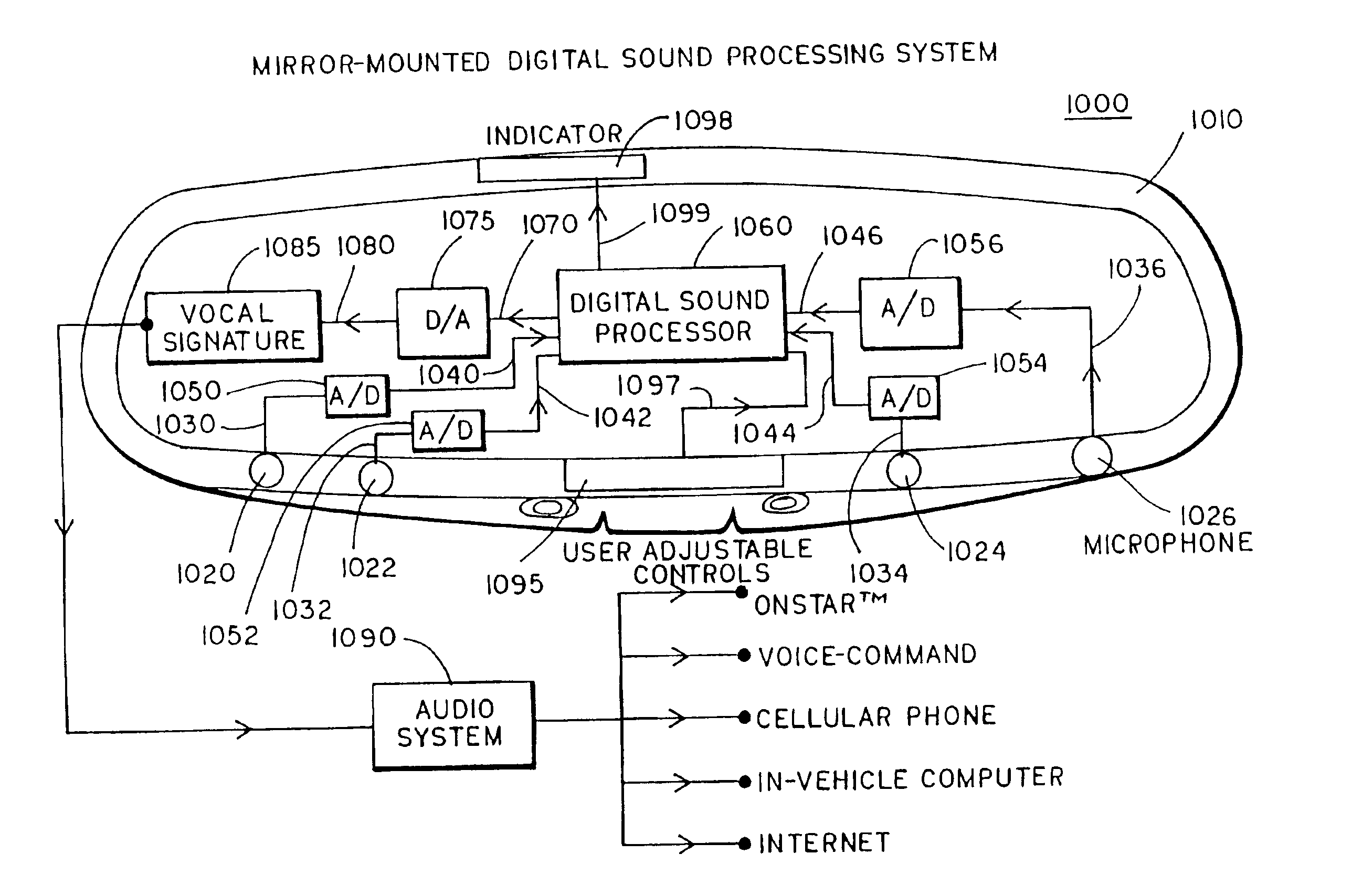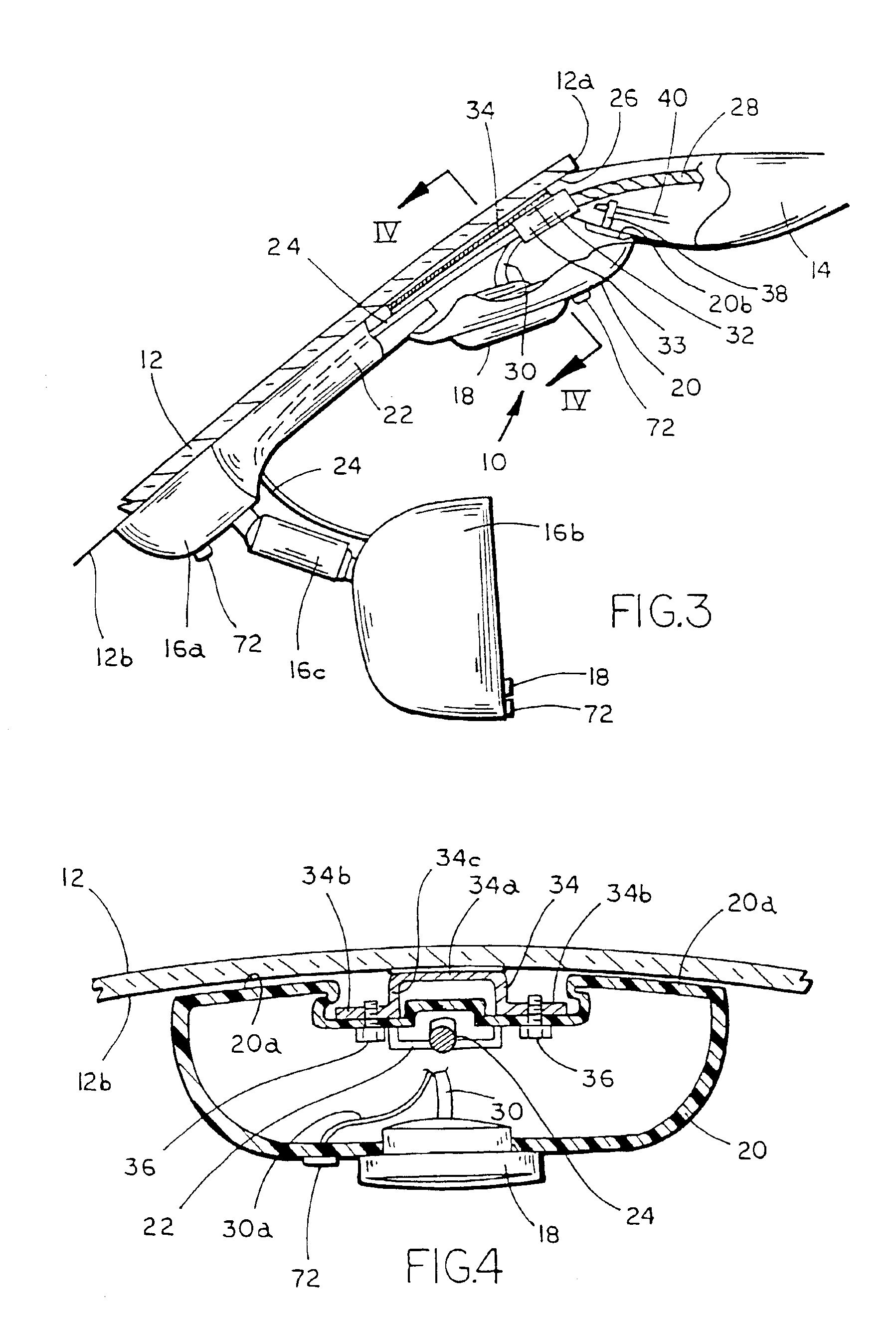Vehicular sound-processing system incorporating an interior mirror user-interaction site for a restricted-range wireless communication system
- Summary
- Abstract
- Description
- Claims
- Application Information
AI Technical Summary
Benefits of technology
Problems solved by technology
Method used
Image
Examples
Embodiment Construction
[0035]Referring now specifically to the drawings, and the illustrative embodiments depicted therein, an accessory or microphone module 10 is mounted adjacent to a vehicle windshield 12, as shown in FIG. 1. Microphone module 10 may be implemented in the vehicle in association with an audio system, such as a cellular telephone, a recording device, such as a dictation system, an emergency communication device, such as the ONSTAR™ system commercially available in certain General Motors vehicles, or any other audio device which may include a microphone or audio receiving device. Preferably, the manually actuated buttons to operate the ONSTAR™ system are mounted at a movable housing 16b of an interior rear view mirror assembly 16, such as is shown generally at 13 in FIG. 1. The vehicle includes a headliner 14, which at least partially covers the ceiling of an interior passenger compartment of the vehicle and has a forward edge 14a which interfaces with an upper edge 12a of windshield 12. ...
PUM
 Login to View More
Login to View More Abstract
Description
Claims
Application Information
 Login to View More
Login to View More - R&D
- Intellectual Property
- Life Sciences
- Materials
- Tech Scout
- Unparalleled Data Quality
- Higher Quality Content
- 60% Fewer Hallucinations
Browse by: Latest US Patents, China's latest patents, Technical Efficacy Thesaurus, Application Domain, Technology Topic, Popular Technical Reports.
© 2025 PatSnap. All rights reserved.Legal|Privacy policy|Modern Slavery Act Transparency Statement|Sitemap|About US| Contact US: help@patsnap.com



